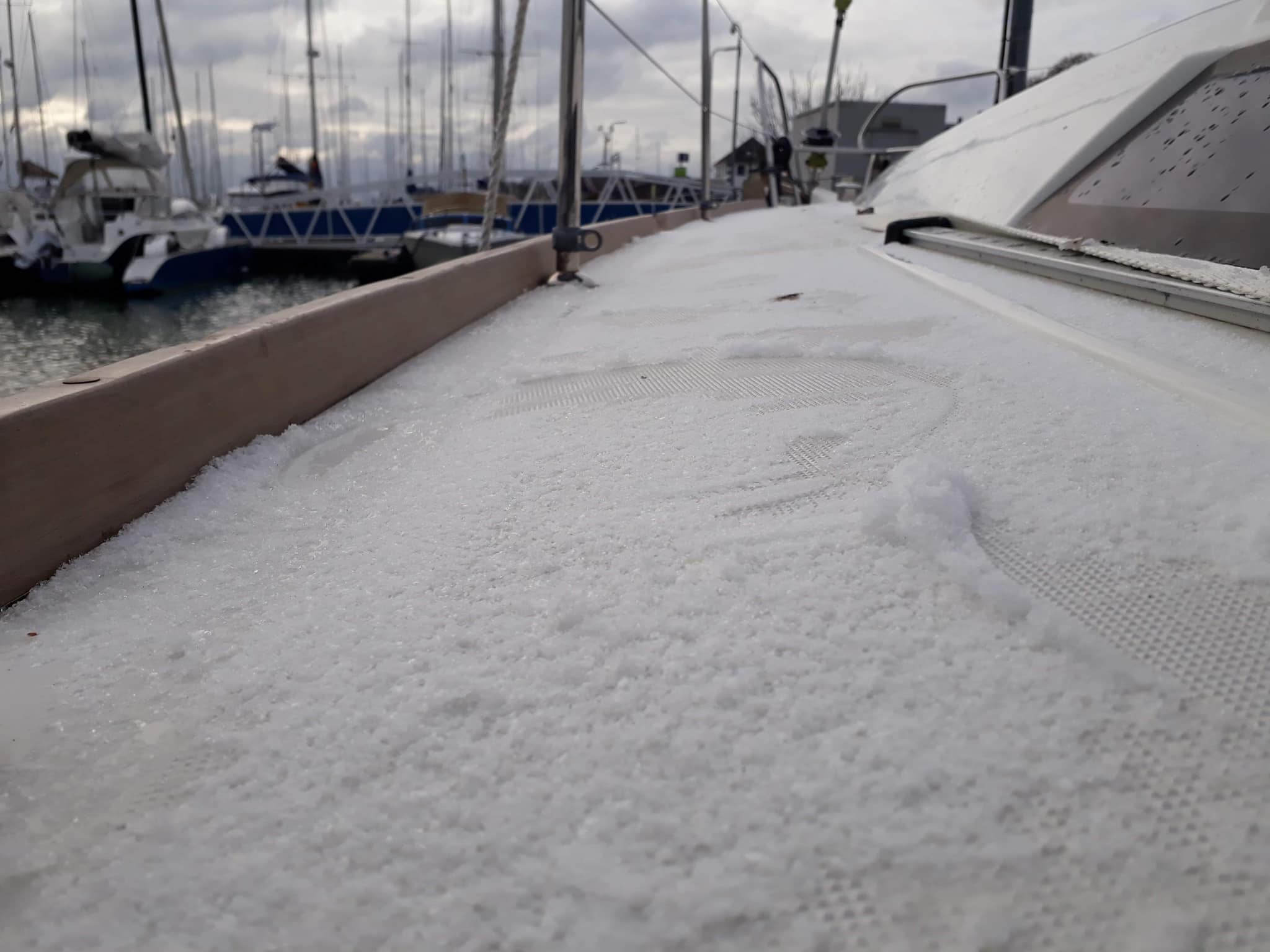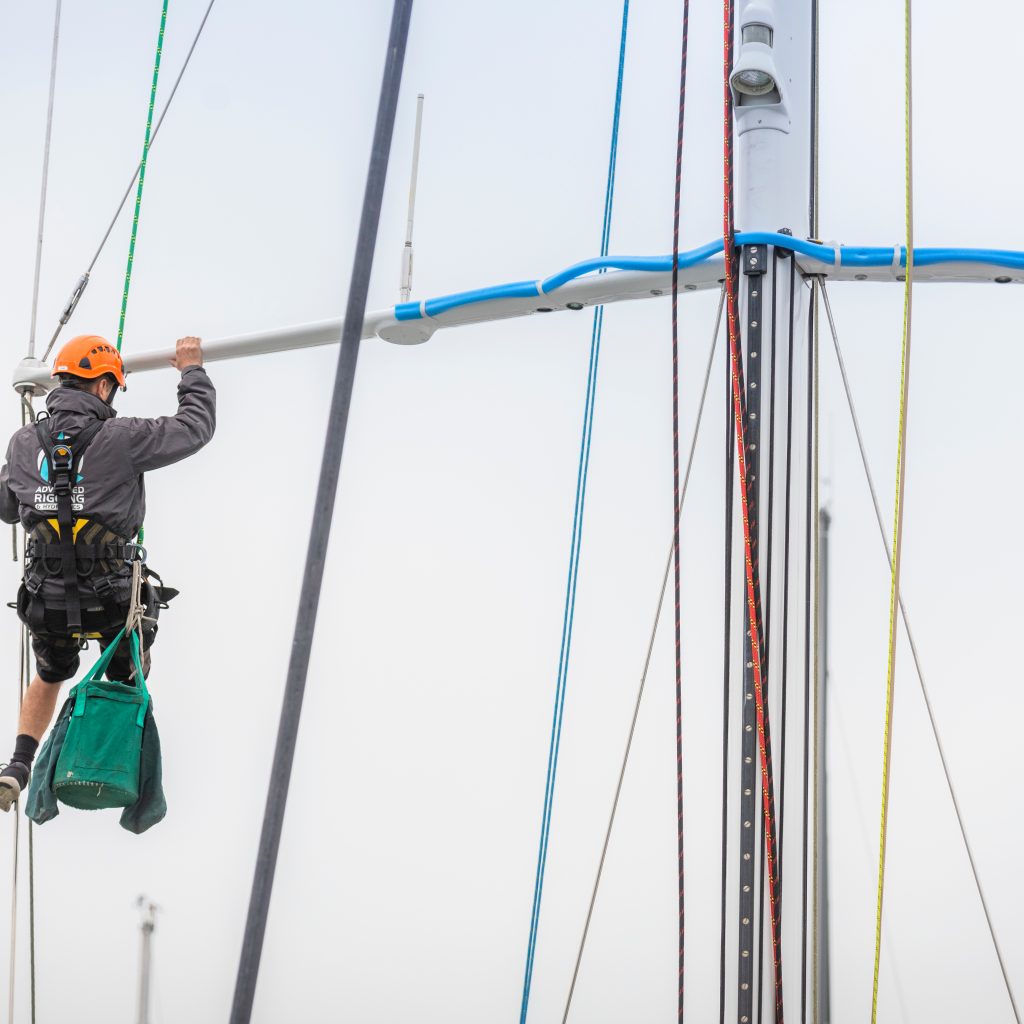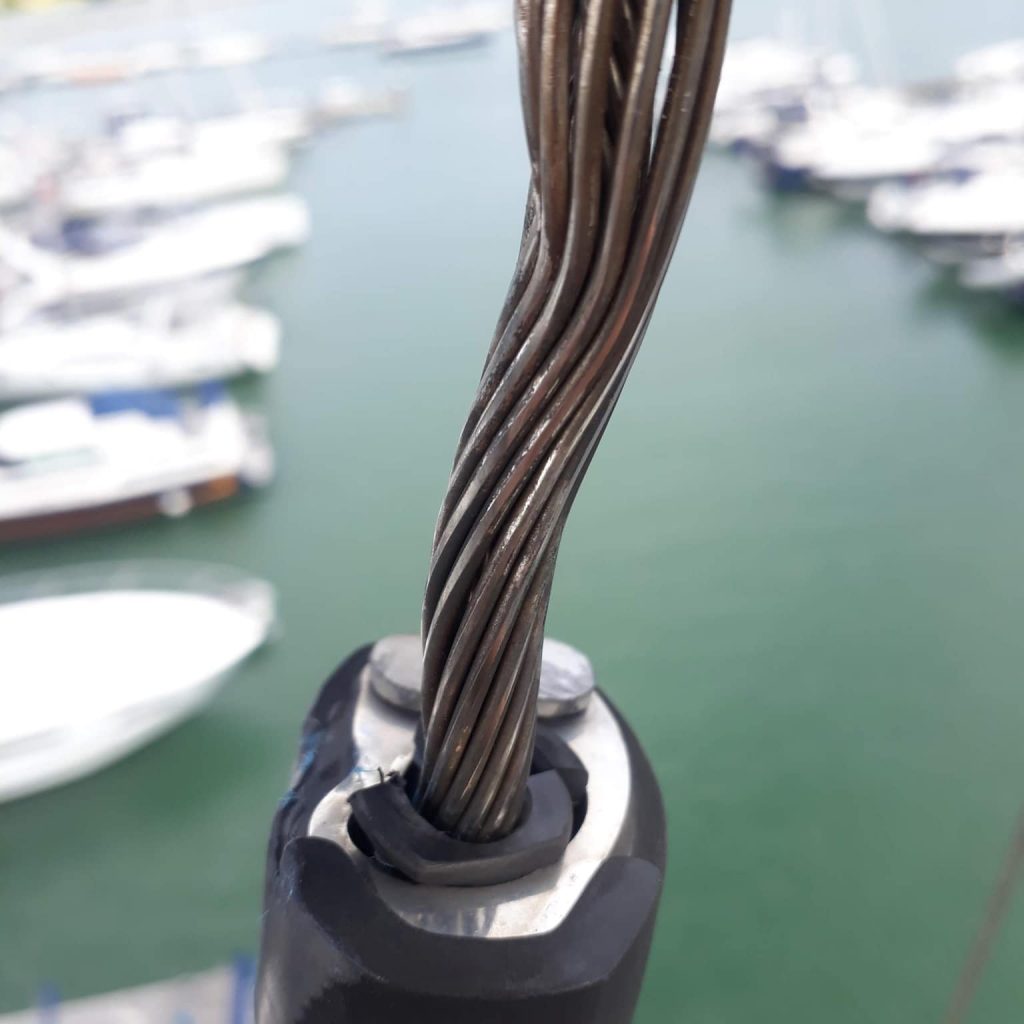Looking After Your Rigging & Hydraulics This Winter

A change of the seasons…
The leaves are turning brown and nights are arriving earlier in the Northern Hemisphere. The buzz of weekend regattas and the steady pace of offshore races has slowed in our local Solent waters and Autumn beckons the next stage of the boating calendar. A number of our clients will be chasing the winds and heading to sunnier climbs joining the ARC or RORC Transatlantic Race where an exciting season of Caribbean exploration awaits on the other side. Be sure to thoroughly check your rig before going offshore and we wish you fair winds for a great sail!
Closer to home, those remaining in The Solent for the winter will be preparing their boats for the colder months ahead. Proper care and maintenance now can help prevent damage and keep your rig in excellent condition for the next season. In this article, we’ll provide valuable advice for winterising your rig, covering topics such as wire yacht rigging care, considerations for your running rigging, and maintenance of your hydraulics systems.
Why is Winterising Your Rig Important?
Winter can bring harsh weather conditions, including freezing temperatures, strong winds, and increased moisture. These elements can be detrimental to your yacht rigging and hydraulic systems if not properly protected. Due diligence looking after these systems now helps safeguard against potential damage, ensuring that your boat is ready to sail smoothly when Spring returns.

Standing Rigging
Rigging Checks
Even a boat that doesn’t get used a great deal should have a full rig check each year, covering both standing and running rigging. Offshore raceboats that are pushed hard in heavy weather should do this before and after each event.
Get a professional check
For those without expert knowledge and owners who do not go aloft, Advanced Rigging & Hydraulics offers a mast and rigging inspection service that provides a completely impartial overview of the condition of your mast and its standing and running rigging. Rig checks are available for yachts of all sizes and of any age. Not only will a rig check highlight any potential issues with your mast and standing rigging, but the rig inspection report will provide you with annual rig records for maintenance, and information to reference in the future should you need to.
Inspect it yourself
If you are content to check the rigging yourself, start by thoroughly inspecting your wire yacht rigging for any signs of wear and tear. Look for frayed wires, broken strands, or rust spots. With wire rigging pay particular attention to where the wire enters the swage – this is the most common place for strands to break.
Make your way steadily along the boat, and check split pins and rings are secured, and shackles are locked and seized. Replace any pins and rings that may be missing.
Also check all terminals and fittings for visual condition and security, paying particular attention to spreader roots and rigging attachment points. At the masthead check the halyard sheaves run smoothly and lubricate them sparingly.
Clean and Lubricate: Clean your rigging using a mild soap and water solution to remove dirt, salt, and debris. This helps maintain the integrity of the wires and prevents corrosion. After cleaning, apply a high-quality lubricant to protect against moisture and prevent rust.
Tension Adjustment: Proper tension is essential for effective rigging. Check the tension of your wire yacht rigging and make any necessary adjustments to ensure it’s under tension. This helps ensure optimal performance and reduces the risk of rigging abrasion or unwanted movement during challenging winter conditions if it is exposed.
Every few years it’s also worth taking the rig down, dismantling components, and removing spreaders. Everything can then be cleaned to inspect for hairline cracks, while any broken strands of wire may be more obvious. Advanced Rigging and Hydraulics offer this comprehensive service at our base in Port Hamble – if it has been several years since you have performed detailed mast maintenance, do contact us to discuss un-stepping your rig, onshore storage, and re-commissioning in the Spring.

Running Rigging
As well as your standing rigging, your yacht’s running rigging should be maintained as part of your end-of-season jobs list. The running rigging, which includes all the lines and ropes used to control the sails, is subject to wear and tear during regular use. Neglecting to maintain the running rigging can lead to potential safety hazards and costly repairs in the future.
Here are some essential tips for end-of-season running rigging maintenance:
Inspect for wear and tear: Carefully inspect all lines for signs of fraying, abrasion, or damage. Pay particular attention to high-stress areas such as winches, cleats, and blocks.
Wash and clean: Remove all dirt, salt, and debris from the lines by giving them a thorough wash. This helps prevent degradation caused by salt crystals and keeps the lines in good condition.
Replace worn lines: If you notice any signs of significant wear or damage, it is crucial to replace affected lines before they fail. Regularly replacing lines is a cost-effective way to ensure safety and performance. At Advanced Rigging, we stock and provide many different constructions of high-strength marine ropes from leading manufacturers. Our main running rigging brands, Gottifredi Maffioli, Liros, and Kingfisher Ropes can all be made up to custom sizes and specifications. Furthermore, all of our ropes are hand-finished using the best quality hardware shackles, snap shackles, rings, and blocks from Tylaska or Navtec. Check out our running rigging guide
Store properly: After inspecting, washing, and replacing lines, make sure to store them correctly. Coiling the lines neatly and storing them in a dry and protected area will help prolong their lifespan.

Hydraulics Systems
Yacht hydraulics play a crucial role in providing stability and comfort while sailing, and regular end-of-season maintenance ensures a trouble-free experience in the seasons to come.
Consider hiring a professional yacht hydraulics technician to perform a thorough inspection. At Advanced Rigging & Hydraulics, our Sparcare service technicians are factory-trained and fully authorised in the service and supply of all Navtec hydraulic systems and Reckmann Rigging Hydraulics.
As part of your winter maintenance schedule, it’s important to inspect the hydraulic hoses, fittings, and connections for any signs of wear and tear. Replace any damaged components promptly to avoid potential leaks that could lead to system failure.
Next, flushing and cleaning the hydraulic system should be done. It eliminates accumulated contaminants and ensures smooth operation. Regular oil changes and filter replacements also help maintain optimal system performance.
Properly lubricating moving parts, such as winches, windlasses, and stabilizers, will prevent corrosion and keep them operating smoothly. Check the manufacturer’s recommended lubricant type and apply it accordingly.
By following these maintenance tips, yacht owners can ensure that their standing rigging, running rigging, and hydraulic systems remain in optimal condition for the next sailing season. Remember, well-maintained rigging contributes to safe and enjoyable sailing experiences!
Questions or planning a larger project over the winter? Contact the Advanced Rigging Team and we will be happy to help.

















